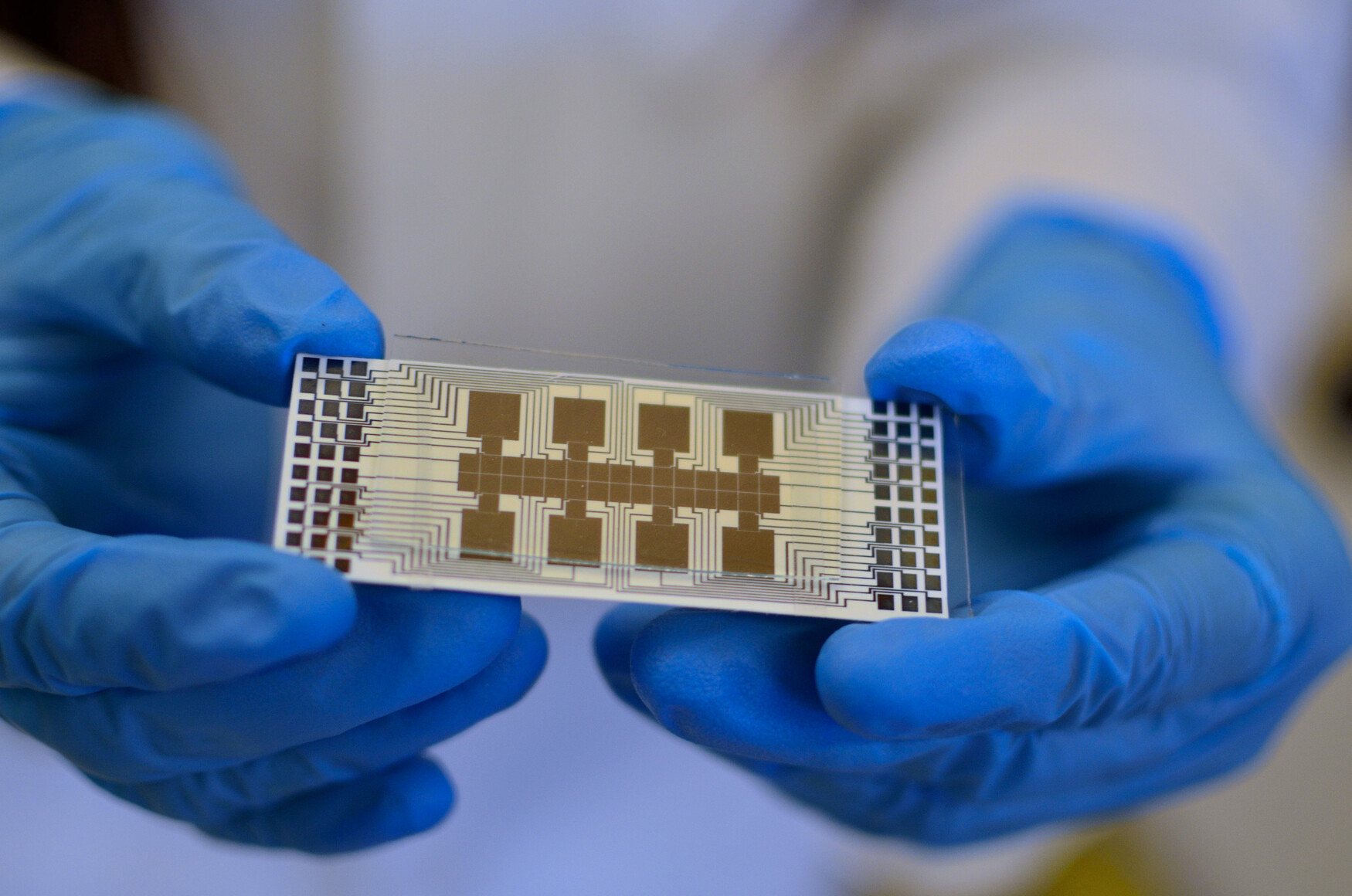Mobile Menu
- Education
- Research
-
Students
- High School Outreach
- Undergraduate & Beyond: Community of Support
- Current Students
- Faculty & Staff
- Alumni
- News & Events
- Giving
- About

University of Toronto researchers have developed a paper-based diagnostic system for use in some of the world's poorest countries. Awarded $112,000 by Grand Challenges Canada’s “Bold Ideas” initiative, the system is being touted for its potential impact on infant and maternal health in developing nations.
Professor Aaron Wheeler and his team of researchers at the University of Toronto (Institute of Biomaterials & Biomedical Engineering — IBBME — the Deptartment of Chemistry and the Donnelly Centre) are developing a low-cost, portable system to detect measles and rubella infection status and immunity. Using a small machine called the DropBot, researchers insert a thin strip of paper approximately one inch wide by three inches long into a testing platform, across which they digitally manipulate droplets of sample. Printed for less than a dollar by a standard ink jet printer in a circuit-like design, the paper is an elaborate system that, as a by-product of a process involving magnetic beads, reagents, and patient samples, generates light. The brightness of the light emitted indicates recent infection or immunity to measles or rubella. With just one droplet of blood, four concurrent tests can be carried out within 35 minutes
In some of the world’s poorest nations, though, 35 minutes could have life-changing impact.
“Every hour 11 infants are born with congenital rubella syndrome (CRS) and 18 children die of measles,” says PhD Candidate Alphonsus Ng, one of the lead designers of the technology.
“Vaccinating children is great,” explains Ng. “But the entire population still needs to be monitored, because there will still be vulnerable segments of the population, and that can lead to serious health risks.”
Rubella – sometimes referred to as “German measles” – can be passed by pregnant mothers to their unborn children with devastating effects that can include severe developmental problems, blindness and stillborn births. The WHO estimates that approximately 110,000 children are born with congenital rubella syndrome (CRS) every year – but that statistic does not account for the number of women who miscarry or experience other pregnancy-ending complications from the disease.
In the next 18 months, the team plans to test their technology on 200 patient samples in Vietnam.
“Vietnam is a hotspot for measles and rubella because they don’t have a common rubella vaccination yet,“ says Ng.
It’s also a country in dire need of diagnostic resources: Vietnam has only two diagnostic labs, one in the south and one in the north. Introducing a rapid, economical field diagnostic tool could have an enormous impact on this country of 97 million and lead to better-informed public health policies.
But testing the technology in the field will also allow the team to work on fine-tuning the technology specifically for the poorest nations.
“It costs us maybe a dollar to print the [paper] test chips,” explains Ryan Fobel, a PhD Candidate and one of the masterminds behind the DropBot, “but printing these in an industrial setting would cut costs by another order of magnitude.” The team is also looking at ways to cut the cost of manufacturing the DropBot to a few hundred dollars, which would put the technology into far more hands, and potentially, allow everything to be manufactured within the host country, generating local jobs.
“This is a great opportunity to bring digital microfluidics out into the field to address a real world problem,” says Wheeler. “I am proud to be working with such a motivated, enthusiastic team.”

